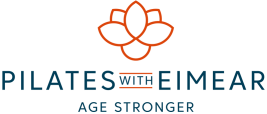Everyone’s journey to becoming pregnant is unique and personal – sometimes a pregnancy is much longed for; sometimes it’s a shock. Whatever your feelings about being pregnant, it is a time to be cherished. Over the nine months, you can adjust to being pregnant and prepare physically and mentally for the momentous event of giving birth and becoming a mother (… perhaps again).
I love supporting women in making their bodies strong during pregnancy, to prepare as much as possible for a good birth and to be ready for the challenges of the first few weeks or months (.. years!). I have already helped smooth the way into the world for some the cutest pilates babies.
If you are already a pilates fan, it’s okay to continue during the first trimester. But if you have never done this kind of bodywork before, you should not start until you have passed the 12th week of pregnancy.
Join me for seven weeks of antenatal classes starting on Thursday, 6.45pm in Excel in Tipperary town. Starting 11th September. Cost: €80. Small group. Early booking advised! Note, there are certain contraindications to doing pilates while pregnant and you must have medical clearance beforehand.
What kind of exercises would you be doing? My antenatal pilates classes are a combination of matwork, sitting and standing movements. You’ll be using a variety of small props such as blocks, stability balls, weighted balls, fitness circles and so on.
Breathe….. You’ll focus on your breathing. Breath is life. Working actively with the breath is one of the five basic principles of Pilates. The focus is on breathing big into the back and sides of the lungs helps ease tension in the neck and mid-back area.
As your baby grows during the pregnancy, the diaphragm is forced upwards into the chest cavity, altering lung capacity and increasing your rate of breathing.
Deep abdominals…. You’ll connect to the deep abdominals! The focus in antenatal pilates is on engaging and working the deepest abdominal muscle, the Transversus Abdominus (TA). This muscle supports the uterus and helps to stabilise and support the lower back.
You’ll be opting out of exercises that include flexion or that pressure on the Rectus Abdomini (to prevent stressing the diastasis recti). You’ll be avoiding many of the traditional pilates moves, such as sit-ups or roll backs.
Pelvic floor… Your pelvic floor is the very base of your body on top of which sits not only your vital organs, but also your growing baby. It must be strong to support all that, but must also be flexible and able to relax during delivery. Ante natal pilates classes help you connect to your pelvic floor using mind-body focus techniques.
Strengthen and stretching (a little)…. You will be doing movements that strengthen the back, shoulders and arms, hips, gluteal muscles and thighs. This will prepare you for lots of lifting, holding and buggy-pushing once your baby arrives. You will also be gently stretching and mobilising your chest, low back, hips and feet. But be aware that the pregnant body secretes a hormone called Relaxin, which increases flexibility to prepare the pelvis for birth and can also mean more instability. For this reason, you must be very careful to avoid overstretching.
Meeting others also expecting … It can be nice to meet up with other pregnant women and exchange experiences and tips.

